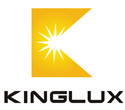|
BOROFLOAT® borosilicate glass is such a unique substrate and has hence become the material of choice for robust high-temperature resistant dichroic filters, hot and cold mirrors.
BOROFLOAT® - The sum of its properties is what makes it unique for functional coatings
1.Exceptionally high transparency
2.Outstanding thermal resistance
3.Excellent mechanical strength
4.Broad range of sizes and thicknesses
High UV transparency down to 300 nm, greater than 92 % light transmittance in the visible and near IR wavelength range, outstanding clarity, low auto-fluorescence and low solarization are specific characteristics of BOROFLOAT® glass substrates used in many optical fields.
|
Optical data Abbe number(ve = (ne - 1) / (nF' - nC'))65.41Refraction index (nd (λ587.6 nm))1.47140Dispersion (nF - nC)71.4 x 10-4Stress-optical coefficient (K)4.0 x 10-6 mm2 N-1Average reference values, not guaranteed values.
|
Optical dataWavelength λ (nm)Refraction index n435.81.48015479.91.47676 (nF ')546.11.47311(ne)589.31.47133643.81.46953 (nC')656.31.46916Mean reference values, not guaranteed values.
|
BOROFLOAT® glass - ideal for hot and cold mirrors due to its outstanding thermal resistance
Hot and cold mirrors either reflect or transmit infrared light and hence require high thermal resistance.
The high boron content in BOROFLOAT® glass lowers the thermal expansion coefficient to 3.25 10-6
K-1 resulting in excellent resistance to thermal shock and temperature gradients.
The thermal properties of BOROFLOAT® glass (uncoated substrate) are shown below.
Maximum thermal resistance of coated filters and mirrors varies depending on the filter
|


